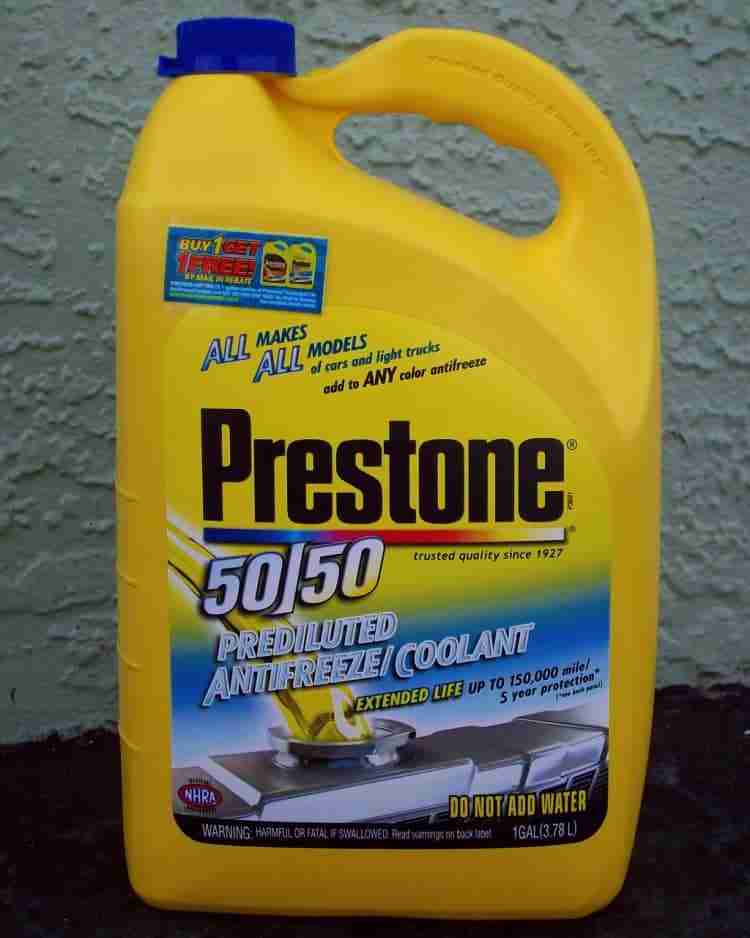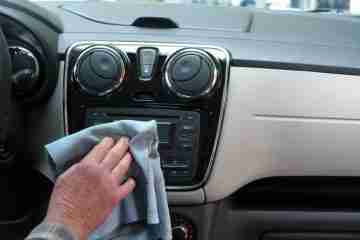How to Mix Concentrated Antifreeze with Water

Most times, when you buy antifreeze for your car, you will find that it comes already mixed to a concentration that can be poured directly into your vehicle. However, antifreeze can also be purchased in a concentrated version. Some people prefer to buy concentrated antifreeze solution because it is typically less expensive, and one bottle will last much longer than a pre-mixed bottle will.
The concentrated version of antifreeze needs to be mixed with water before it can be poured into your vehicle though. If the concentrated version sounds like something you would prefer, you will have to learn how to properly dilute it before use. Read below to learn more about antifreeze, and how to properly mix antifreeze with water.
What is Antifreeze?
Anitfreeze is also referred to as engine coolant. Basically, it is a colored liquid that is mixed with water. This combination of fluids is used to help regulate your engine during times of extreme temperatures. As the temperature outside gets really hot or really cold, antifreeze is pumped through the engine block. This keeps your engine at an even operating temperature so that it does not get too cold or too hot. Without antifreeze in your car’s system, your engine will eventually overheat and cause parts of your engine to shut down. Keeping proper levels of antifreeze in your engine’s system also helps to prevent corrosion.
How Does Antifreeze Work?
At the base of every type of antifreeze is the chemical ethylene glycol. Ehtylene glycol is an organic compound that acts as a heat transfer agent in its liquid form. The concentrated version of antifreeze is mixed with water, typically at a 50/50 ratio. Once this diluted mixture is obtained, it is poured into the proper reservoir in your engine. Because of ethylene glycol’s abilities to conduct and transfer heat, this liquid helps your engine to maintain its optimal temperature for operation. During extremely hot days, antifreeze cools your engine down, while it does the opposite during days of extreme cold.
What Do the Different Colors of Antifreeze Mean?
You may have noticed that antifreeze solution is sold in multiple different colors. What do these different colors mean? Unfortunately, there is no specific answer to this question. Different colors of antifreeze do mean different things, however one single color does not mean the same thing across the board of all brands of coolant. For example, a green coolant from one brand may be specifically for hybrid cars while a green coolant from another brand may be for general automotive use. In general, however, different colors or antifreeze are used for different purposes.
There are three main types of engine coolant: IAT, OAT, and HOAT. IAT stands for Inorganic Additive Technology. This green colored coolant was the go-to for decades, however it is rarely used anymore due to the frequency at which it needs to be replaced. OAT, Organic Acid Technology, are typically coolants that are red, orange, yellow, or purple. This type of coolant is more popular as it only needs to be changed every five years or 50,000 miles, whichever comes first. The last type of coolant is HOAT, which stands for Hybrid Organic Acid Technology. This kid of coolant gives your vehicle the benefits of both IAT and OAT coolant, and are primarily yellow or orange. There are some types of HOAT coolant that don’t need to be replaced for as long as 10 years or 150,000 miles.
Diluted vs. Concentrated Antifreeze
There is no real difference between purchasing diluted or concentrated antifreeze for your vehicle. Once the concentrate is diluted appropriately, both solutions work in the same way. So why do people have preferences? Really, the preference between diluted and concentration comes from ease of use or price. Those who value something that can be purchased and used immediately tend to favor the diluted variety of antifreeze. Oppositely, those who wish to save money and have their product last longer tend to prefer the concentrated version. This version involves an additional step of mixing the concentrate with water.
How to Mix Concentrated Antifreeze with Water
If you decide to go the concentrated route when you purchase your antifreeze, you will have to learn how to correctly mix your concentrated antifreeze with water. Before you begin, it is essential that you check the instructions that come with the bottle that you purchase. Some brands have slightly different instructions, so make sure you check before you start.
When you are ready to mix, you will need demineralized or distilled water, a gallon of antifreeze concentration of your choosing, a funnel, and a clean, empty gallon container for mixing. Pour half of the antifreeze concentrate in the clean, empty gallon container slowly and carefully using a funnel. Fill the remaining half of the container with distilled water using the same funnel. Then, move the funnel over to the antifreeze container. Pour the remaining half of the distilled water into this container. Once you are done, you will have two gallon containers of perfectly diluted antifreeze for your vehicle. Replace the lids on both containers and store in a cool, dry place.
How to Add Antifreeze to your Vehicle
Before adding antifreeze to your vehicle, you will need to drain your car’s coolant system completely of the old antifreeze. Also, it is vital that the engine of your car is completely cool before starting. In order to add antifreeze to your vehicle, you will need a funnel.
First, open the hood of your car. Locate the engine coolant reservoir, which is typically a translucent white color with a hose connecting to the radiator. Use a thick towel in your hand to loosen the reservoir cap slightly to release pressure. Once pressure is released, remove the cap completely. Place the funnel in the opening, and slowly fill the coolant mixture to the cold fill line. Once the coolant reaches this line, replace the cap tightly until you hear it click. Then you can close the hood, and you are ready to go!













No Comment